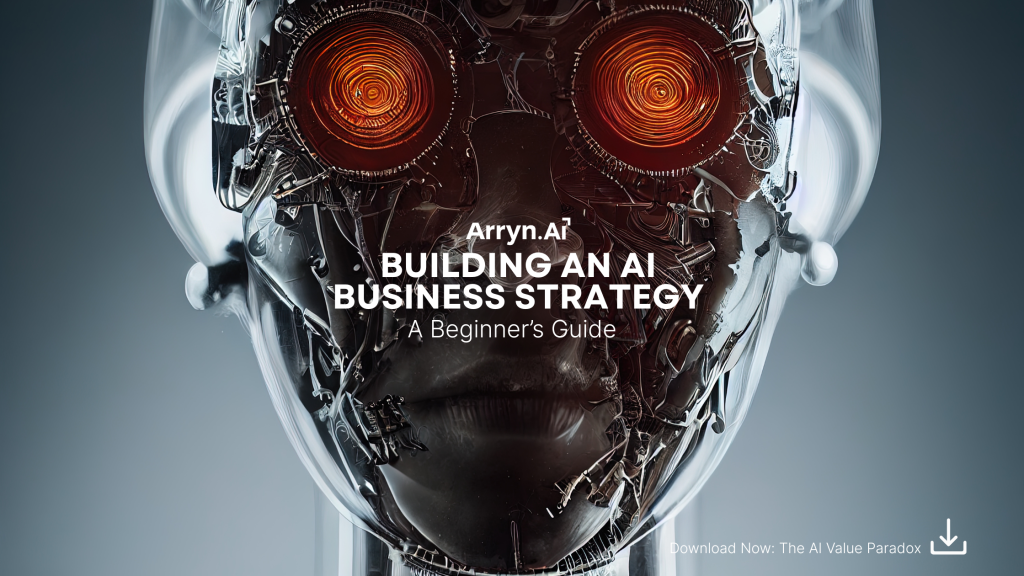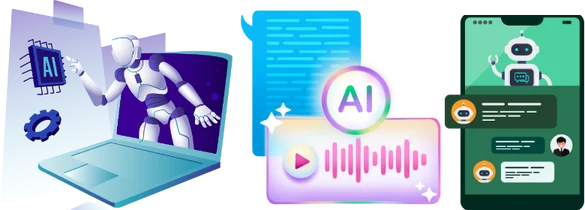Artificial intelligence (AI) is no longer a futuristic concept — it’s a competitive necessity. Businesses that integrate AI into their strategies gain the power to innovate faster, make smarter decisions, and improve efficiency across every operation. Yet, many leaders still wonder: How do you build an AI-driven business strategy that truly delivers value?
What Is an AI Business Strategy?
An AI business strategy aligns artificial intelligence with your organization’s goals, operations, and decision-making processes. Unlike traditional strategies that rely on historical data, an AI-driven approach uses automation, machine learning, and analytics to continuously generate insights and adapt in real time.
According to Harvard Business School professors Marco Iansiti and Karim Lakhani, authors of Competing in the Age of AI, today’s leading firms are “architected to release the full potential of data, algorithms, and AI.” That means strategy is no longer about isolated tools—it’s about building an ecosystem that learns, scales, and evolves.
Six Steps to Create an AI Business Strategy
1. Define Business Objectives
Start by identifying how AI can advance your key business goals. Use an AI-first scorecard to assess your organization’s readiness—measuring adoption, infrastructure, and innovation capacity. This ensures AI investments align with your broader objectives rather than becoming isolated experiments.
2. Audit Your Data
AI thrives on quality data. Conduct a data audit to evaluate the accuracy, accessibility, and security of your information. Break down data silos between departments to build an integrated system that allows AI models to generate reliable, organization-wide insights.
3. Build an Ethical Foundation
Ethics must be embedded from the start. Create clear guidelines around data privacy, fairness, and transparency. Strong data governance not only protects your brand but also builds trust among customers and regulators.
4. Choose the Right Tools
Select technologies that address your most pressing business challenges. Options include:
- Machine learning platforms for predictive insights
- Natural language processing (NLP) for customer interaction
- Robotic process automation (RPA) for repetitive tasks
Start small, test thoroughly, and scale gradually to manage risk and encourage adoption.
5. Develop AI Skills
Upskill your workforce in data science, analytics, and machine learning. Cross-functional collaboration ensures that AI initiatives stay aligned with business priorities. Without the right talent, even the best AI strategy can falter.
6. Secure Employee Buy-In
Cultural readiness is essential. As HBS Professor Karim Lakhani notes, “Culture eats strategy for breakfast.” Communicate the vision clearly, involve employees early, and show how AI enhances rather than replaces their roles.
Lead in the Age of AI
Implementing AI is not a one-time project — it’s a continuous transformation. As Professor Tsedal Neeley explains, digital leadership requires “a perpetual state of transitioning.” Companies that embrace this mindset—combining technology, data, and human agility—will define the next generation of business success.
Building an AI business strategy today means preparing for a world where learning, adaptation, and innovation never stop. The future belongs to organizations ready to act now.
- https://arryn.ai/about-us/
- https://arryn.ai/new/services/
- https://arryn.ai/case-study/
- https://arryn.ai/contact-us/
- https://arryn.ai/ai-whitepaper
- https://hbr.org/2020/01/competing-in-the-age-of-ai
- https://online.hbs.edu/blog/post/ai-business-strategy
- https://sloanreview.mit.edu/article/how-ai-is-transforming-business-strategy/
- https://www.mckinsey.com/capabilities/mckinsey-digital/our-insights/the-state-of-ai-in-2024
- https://hbswk.hbs.edu/item/digital-leadership-in-an-ai-world






